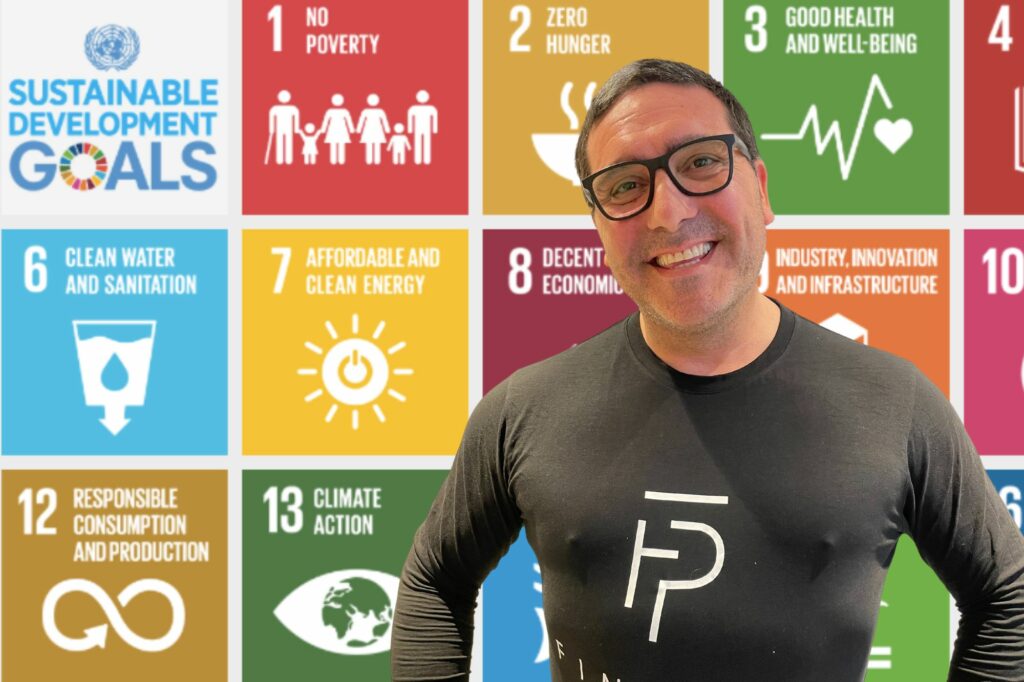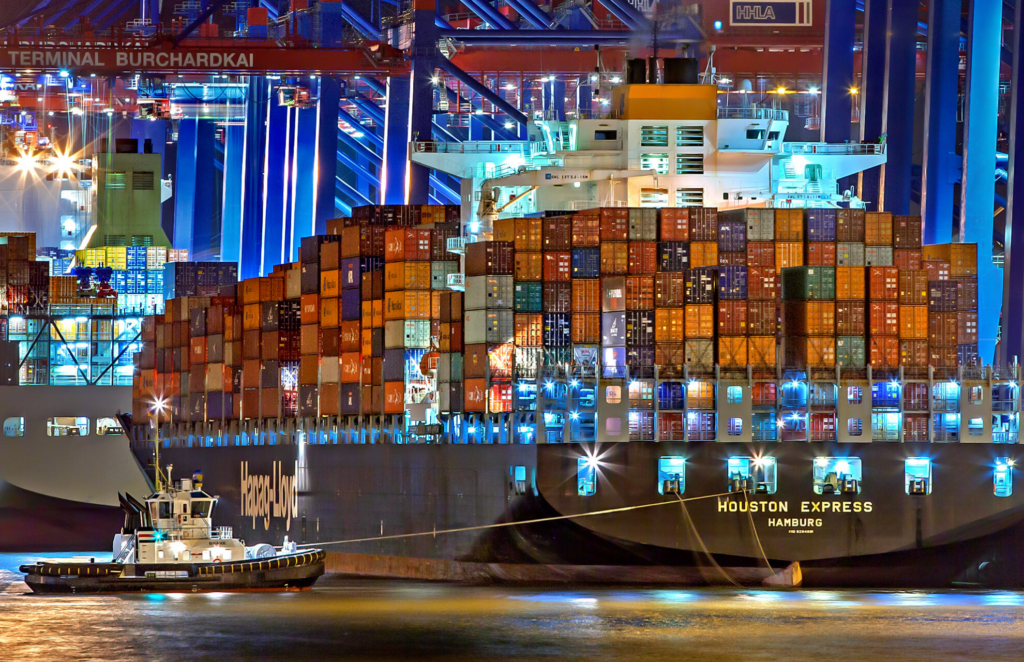Some years ago, a man came to my office and asked me if I could create a sustainable system for delivery companies. When I heard the man’s request, I answered, “Of course”, without thinking twice, convinced that anything has to be better. If I succeeded, he would pay me a million euros and I’d become co-ownership of his company. Then the project “TruckMe” was born. Working on the project has given me insight into how transport companies can become more sustainable.
Logistics is one industry that stresses me more than any other when it comes to climate goals. They’re not moving fast enough, and profitability seems like an impossible goal for them in this context because logistics companies have such high carbon emissions rates compared with other industries that are adopting sustainable practices or going green already!
The problem
Logistics is the lifeblood of our modern world, with 90% of global trade carried out by the international shipping industry every year. The complex logistics behind it involve many parties who have conflicting interests and priorities as well as using different systems to track shipments. Still, they all play an important role in making sure to get your product from anywhere on earth into somebody’s hands without any problems or delays along the journey!
A new study showed that a simple refrigerated transport passed 30+ different organizations, which required 200+ separate communications. Any misjudgments in these steps may result in the product being delayed, lost, or damaged. The increased demand for same-day delivery service and time guarantees will not be easily scaled up with traditional tracking technology. Organizations need up-to-date, secure, and authentic data to make decisions.
Sustainable Development 2030

A new study showed that a simple refrigerated transport passed 30+ different organizations, which required 200+ separate communications.
When the Sustainable Development Goals 2030 were first announced, it was clear to me that the logistics industry would need to play a big role in achieving them. After all, this is an industry that is responsible for moving goods and materials around the world, causing a big part of the pollution. And yet, up until now, there has been little discussion about how the logistics industry can become more sustainable. The logistics industry is one of the most detrimental to society, yet it continues its harmful practices without any sign of progress toward solving our climate change problems.
In order for this sector and others like them to have a chance at saving ourselves from the disaster, I believe they must drastically reduce costs through an innovation-driven transformation that can be achieved quickly with minimal environmental impact; but until then we will continue seeing more natural events like heat waves becoming commonplace rather than exceptional occur annually.
In this blog post, I’d like to explore some of the ways that the logistics industry can achieve sustainability goals in 2030. I’ll also highlight some of the challenges that lie ahead.
In recent years, there has been a tremendous amount of technological advancements and globalization. This has led to the integration of different technologies into societies all over the world. However, this has also created a lot of problems. Different countries are using different systems that are not compatible with each other, making it difficult for people to communicate and collaborate with each other. This is not sustainable from a global perspective. We need to find a way to connect all of these different systems so that the world can communicate and work together more effectively.
Understand logistics

I know that with the pandemic, in the next few years, e-commerce’s share of total retail sales is likely to dramatically increase due to the changed behavior, and, as the end-users, we are likely to abandon shopping in traditional stores and retire to the comfort of our own homes. We enjoy the convenience of ordering from home, and this transition from retail to e-commerce provides a great opportunity for logistics companies — to deliver the growing number of goods purchased online.
In the bigger picture, the logistic industry delivers more than 500 million packages every day, which equates to a $961 Billion dollar industry. The strategic battle for this last mile will be a hard-fought battle, played out by both online retailers and logistics companies. The big players in this industry like Deutsche Post DHL, United Parcel Service, and FedEx are to face really steep competition from other, more local players such as Swedish PostNoord (which is the old post office), or online stores and technology companies such as Amazon, Google, eBay, and Japanese Rakuten who are keen to take advantage of the logistics market and expand their supply chains further, offering any courier to join and become part of their network… and there you have the problem.
The main disadvantage would arise when trying to install multiple platforms, with individualized functionality, which could lead to messy interfaces and information overload.
There are some advantages to using a single platform for all transportation companies, but it might be difficult if platform users have different needs. The system should allow tracking of cargo from point to point so that resources can go towards filling up transport vehicles instead of having half-empty ones taking up space in terminals or warehouses due to poor management of storage capacity.
There is one solution
If I were to develop a system for logistics, it would be made open to all companies to join with their own platforms and systems, with financial services integrated. Supply chain funds settlements would be made based on the exact cost per kilometer (or mile), the price of real-time fuel, and the routes taken to calculate their carbon footprint, and it would be in the Blockchain.

One of the most promising technology to serve the supply chain is the blockchain, and I know some of my colleagues must be thinking — He must mean distributed ledger technology (DLT), and I’ll explain the difference later but in this case, I do mean blockchain, because it evolves smart contracts and payments which DLT’s do not in that extension. The supply chain is the system that organizes the flow of goods and materials from point of origin to point of consumption. It includes everything from the raw materials used to make a product to the distribution channels through which it is sold. The supply chain is critical to the functioning of the global economy, but it is also notoriously complex and opaque.
Blockchain technology has the potential to transform the supply chain by improving transparency and traceability. For example, each link in the supply chain could be represented by a blockchain ledger. This would allow all stakeholders to track the movement of goods and materials throughout the system. It provides a scalable, instant solution for order tracking and authentication. Blockchain ensures reliable data about the transport and logistics ecosystem, where the entire network contributes to data validation. It could also include the supply chain for truck parts and used trucks that are to be tracked on a digital ledger, in order to optimize that no transport is out of service because it lacks spare parts. As a result, blockchain-powered supply chains would be more efficient and less prone to fraud and corruption. In addition, they would provide buyers with greater assurance of product quality and safety. Ultimately, blockchain technology has the potential to revolutionize the way that goods are produced and distributed worldwide.
The order
The second the customer pays, a chain of self-performing smart contracts starts to deploy, the product is packed, the manufacturer, dealer, freight forwarder, driver’s payroll taxes, corporation taxes, and VAT are also paid for all and if credit is needed, it is done automatically directly from the creditor and everyone gets paid in a smart contract.
The technique
Primarily looking for empty freight forwarders nearby who return from the previous delivery, with the lowest distance to their own home depot, matching connecting shipping, lowest fuel consumption, recipient availability, available refrigerated container for refrigerated transport without breaking the refrigerated chain, completed customs declaration, all without any separate communication or waiting times between either the various instances or units.
The new blockchain technology can record all these steps securely and in real-time for all parties involved. It enables easy coordination of documents on a shared ledger, making physical paperwork virtually unnecessary. Customs clearance is faster and more efficient, which reduces processing times for goods during customs control through smart contracts.
Basically, this will reduce a lot of costs and mistakes caused by human error. Blockchain technology is one of the most revolutionary and fundamental inventions of mankind in modern times. The potential and opportunities it offers may change humanity and bring us into a new era equivalent to when the internet was invented almost 25 years ago. I remember it like yesterday when that minister said the internet was just a fad… poor thing. Who could have guessed that it would be the beginning of an IT society that changed now, and see where it is headed today.
Blockchain has its origins in the protocols that today serve cryptocurrencies, so it is no wonder that many people confuse the concepts. Like oats, it was thanks to the cryptocurrency Bitcoin that drew the world’s attention to the protocol and in this way, we gained insight into how the technology worked. Now we can apply the technology is so much more than digital currencies, which are actually only a small part of blockchain today. Now we see countless applications in the areas of healthcare, medicine, politics, academics, and many more than the transportation industry.
I just hope that we start to embrace the technology, adopt it and move fast forward into the future, and we might achieve the sustainable development goals we have set for 2030.
